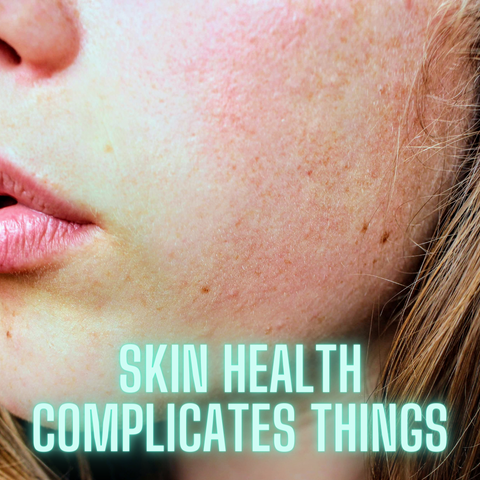
5 Things that Make Finding Your Skin Undertone a Real Struggle
Have you ever gone to a makeup counter, seen all the different shades of foundation, and wanted to run for the hills? We get it. Skin undertones are so hard! This is a list of the top 5 things that make it even harder to determine your skin tone than meets the eye.
1. People often confuse TONE and UNDERTONE.

Regardless of pigmentation and depth of your complexion, all skin has undertones. Think of it like the rising sign in your astrology chart: it adds depth, but isn't the entire story. Even women with luscious deep ebony skin have undertones, and some can be radically different from each other. For example, Venus and Serena Williams both have deep complexions, but Serena's skin has a gold undertone, which enables her to wear golden blonde if she chooses. Her sister Venus has a much cooler color palate (neutral-cool undertone) and would probably look better in slightly ashier or neutral undertones. Likewise, Dolly Parton and Grace Kelly are/were both quite pale, but Dolly has peach-gold undertones and the late Princess Grace of Monaco had cool pink undertones. Both women look amazing in blonde but typically select different shades. (Dolly rocks gold blondes; Grace Kelly sported natural ash blonde.) The light, bright blonde hair of Dolly Parton might look brassy on women with a cooler undertone.
2. Dry, irritated, or aging skin can camouflage (but not change) your natural undertone

Another thing to keep in mind is that your skin will get drier as you age. If you are not on top of your exfoliation and moisturizing routine, your skin may start to take on an ashy or dull appearance. Worse that that, it could look pinker due to the irritation that often accompanies dry skin. Know that this is due to poor skin conditioning and may result in a false positive for cool skin undertones, even though this may not be your true undertone.
Your true undertone will not change with age, sun exposure, or laxity of the skin. We advise considering yourself a priority and making sure you take good care of the skin on your face. Not only will this make any hair color look better, but it will also help give you a little boost of confidence throughout the day. Plus, who doesn't want to age as gracefully as possible? Good self-care is how you do it. (Don't feel guilty about caring about yourself. This isn't about vanity. Taking care of your skin is just another part of your overall healthcare routine. Remember that you're worth the time and effort.)
3. Some people have more than one skin undertone (olive and neutral)

If you struggle finding your skin undertone, honor that struggle! It may be diagnostically relevant. The folks who struggle the most with this often fit into the "all of the above" categories (warm / olive), and they struggle precisely because they may not have realized that other categories existed -- and they probably fall into one of them.
Once you take into consideration the removal of perceptual obstacles, such as dry or irritated skin, it is relatively easy for people with warm or cool complexions to figure out which undertones they have. Olive and neutral undertones many times will still struggle because it may not have occurred to them that two-in-one was the real answer all along!
4. Olive skin undertones can be very tricky

If you have olive skin, take a deep breath before reading the rest of this paragraph. (Pause for deep breath.) You have the most difficult complexion undertone because the little hint of gold in your skin makes some cool colors a bad match and the dominant cool undertones in your skin can make gold undertones trickier too. Look for balanced, blended hair colors rather than colors that are the same throughout.
Now that you know your skin undertone, it's time to figure out what to do with that information! In the next article, we will share how to make the most of this intel to best strategize for maximum impact.
CLICK HERE TO SEE HOW-TO ARTICLE: How to find the best hair color for your skin undertone (strategies)










